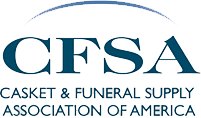Compliance with government regulations isn’t always the most exciting topic, but it certainly is necessary to do – and do well – to serve your employees and save your company some money.
The Occupational Safety and Health Administration (OSHA) and the various state-level occupational safety and health agencies have many rules about safety in the workplace. These are especially numerous and complex for our manufacturer members, distributors, logistics operators and chemical companies. Discussions with these members over the last couple of months led us to bring you another extremely valuable resource in the Essential Online Compliance Manuals linked on the CFSA website under Member Programs. When you are logged in, the page will show the login credentials to access this and the other compliance manuals to which we subscribe on your behalf. The beauty of this online edition is that it is always updated by the professionals at JJ Keller, the nation’s leading compliance advisory firm. And you can look at it, search it, and find your answers 24/7.
Speaking of compliance, here’s a couple of issues that have developed recently which most CFSA members will be interested in:
Temperature screenings? If you make a record, it must be kept 30 years
Many employers now check employees’ temperatures upon arrival for work to identify workers potentially infected with the SARS-CoV-2 virus that causes COVID-19. Some employers even ask employees fill out questionnaires on how they’re feeling. A guidance from OSHA and CDC pointed out that such documentation would be a “medical record” that must be retained according to 1910.1020, i.e., for 30 years.
Specifically, the OSHA/CDC joint guidance discussed options such as taking temperatures and performing other screenings, with tips on how to perform these tasks safely. Then, a footnote to that section stated:
“Employers should evaluate the burdens and benefits of recording workers’ temperatures or asking them to complete written questionnaires. These types of written products become records that must be retained for the duration of the workers’ employment plus 30 years. See OSHA’s Access to Employee Exposure and Medical Records standard (29 CFR 1910.1020).”
While OSHA and CDC recommend screening workers, an employer may want to avoid documenting temperature readings, and use verbal rather than written questionnaires.
Record-keeping memo widens net on COVID-19
Effective May 26, OSHA now requires ALL employers to record cases of COVID-19 if:
- The case is confirmed as COVID-19, as defined by the CDC
- The case is work-related per 29 CFR 1904.5
- The case involves one or more of the general recording criteria in 29 CFR 1904.7, such as medical treatment beyond first aid or days away from work
- The employer has 11 or more employees
- The employer is not partially exempt from Part 1904
Accordingly, until further notice, OSHA will enforce the record-keeping requirements of 29 CFR 1904 for employee COVID-19 illnesses for all employers. OSHA instructs agency inspectors to consider the following when determining whether an employer has complied:
- Reasonableness of the employer’s investigation into work-relatedness
- Evidence available to the employer
- Evidence that the illness was contracted at work
Source: Revised Enforcement Guidance for Recording Cases of Coronavirus Disease 2019 (COVID-19); OSHA memo – 5/19/20
FMCSA announces final hours-of-service rule changes
This is important if you have a logistics/trucking operation – The Federal Motor Carrier Safety Administration (FMCSA) announced for significant changes to the hours-of-service rules for interstate truck and bus drivers. To see the changes, follow this link.

